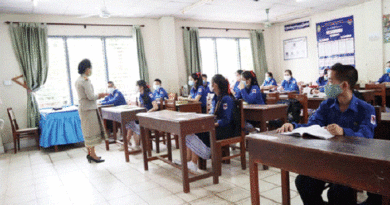Laos Falling Short Of Education Development Goals
While Laos has made steady progress in education reform, universal primary education may not be achieved by 2015 as targeted due to the high dropout rate.
According to a recent joint report by the government and the United Nations, Laos is close to achieving the targeted 98 percent net enrolment rate for girls and boys but the overall efficiency of the education system remains low.
Primary schools have significant numbers of over-aged and under-aged pupils because of early and late entries and grade repetition.
The survival rate to grade 5 has improved from just 48 percent in 1992 to 70 percent in 2012, but it is still low compared to other countries in the region.
The report said the analysis of administrative data by grade shows that the first year of school is the most critical. This is when the dropout rate is highest, meaning that the greatest proportion of children stop attending school and do not progress to the next year.
Significant disparities lie in school attendance and survival rates. A survival rate to grade 5 is lowest in rural areas without road access, amongst children in poorer communities, and in children of mothers with no education.
The learning standards of grade 5 pupils vary greatly by subject, with students scoring least in mathematics. Learning assessments in 2006 and 2009 show the factors associated with teacher characteristics appear to influence student learning outcomes more than classroom factors do.
The transition rate from primary to secondary education has steadily increased. The secondary gross enrolment ratio has increased from just above 20 percent in the early 1990s to 46 percent in 2012 (65 percent for lower secondary).
However, this is still too low to enable Laos to graduate from least developed country status by 2020 if the current trends continue. One reason for the low secondary enrolment, although not the only one, is the high loss and dropout rate in primary schools (about 30 percent), especially in the first year.
Other reasons relate to difficulties in access to and a low demand for secondary education, the report noted.
A senior official at the Ministry of Education and Sports told Vientiane Times recently that time is running out for the 2015 deadline and emphasised the need for all groups to work together to overcome education disparities and achieve equitable quality education for all.
The ministry reported that national primary enrolment rates have now risen to 95.2 percent, up from 85 percent in 2005, while the gap between male and female enrolment has also narrowed from 7 percent to 2 percent.
But ensuring that children remain in school and complete the full five grades of primary schooling remains a major challenge.
Only about two-thirds of children nationwide complete primary school, with children from remote villages in the most educationally disadvantaged parts of the country facing the greatest difficulties.
Source: Vientiane Times




